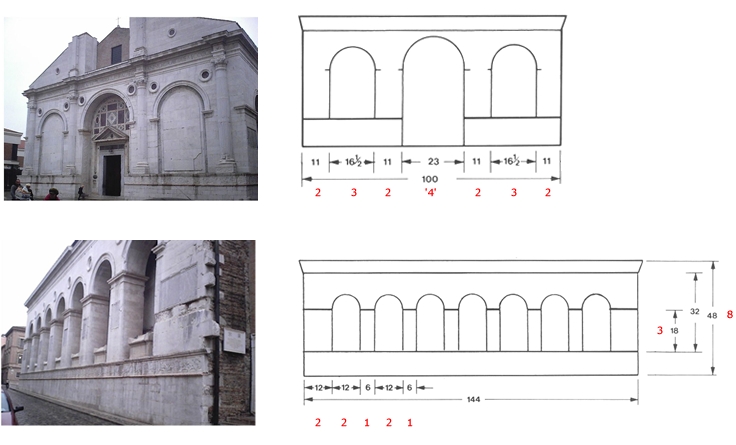80599, RE: Pythagoras and Alberti
Послано guest, 29-10-2011 05:14
Pythagoras and Alberti
Pythagoras (ca. 523 BC) discovered that musical intervals could be translated into mathematical equations. He discovered that the octave could be expressed as the proportion 1:2, the fifth as 2: 3, the fourth as 3: 4 etc. We can remember these proportions easily by the numbers of the harmonic /overtone series: figure 1 shows a fragment of the series. As you can see: the fourth G-G has the right numbers 3 and 4.
Figure 1
In the Renaissance there was a new interest in the theories of Pythagoras. It is the famous architect Leon Battista Alberti (1407-1472) who connects beauty to Pythagoras' musical proportions:
We shall therefore borrow all our Rules for the Finishing our Proportions, from the Musicians, who are the greatest Masters of this Sort of Numbers....
Alberti defines ideal proportions for rooms, which shows our musical intervals:
• Design 1 (minor): 1:1, 2:3, 3:4
• Design 2: 2:4. 4:9, 9:16
• Design 3 (big): 1:3, 3:8, 1:4
These intervalproportions are fundamental to renaissance-architecture. A nice example is the by Alberti designed cathedral Tempio Malatestiano in Rimini, Italy. In figure 2 you will see the proportions of Pythagoras (based on the Roman foot of 29,6 cm).
Figure 2

|
